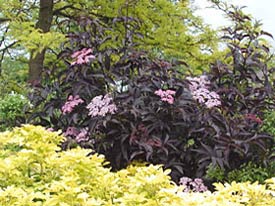When you live in the country cats have a way of just showing up. That's how I have eight of them living both inside and outside of the house. The oldest is a very fat female named Katty Kay. She showed up in the barn sleeping on the tractor seat the fall of 2009. She wasn't fat then but once she was given access to house and food she filled out quickly.
 |
| Pippi aka Pipster, and Pipper he's the main man of the house. |
The neighbors gifted me with Pippi and Tigger. There were four kittens all together but only Pipper and Tigger remain. Tigger took off about this time last year and was gone a good six months. When he came home he was very thin and scared of everything. Now he is very fat and lazy. He lets Pipper be the man of the house, but can't resist smacking him from time to time.
Pippi has decided, at least for the time being, to spend his summer sleeping on top of my Boston fern. I have no idea if the fern will survive and he was greatly put out when I came by and watered the plant this afternoon.
 |
Here's Tigger trying to sit on a fence post. He's too fat and falls off.
|
Tigger is obviously worm infested. He has several issues around the problem. I've ground up worm pills and tried to get him to eat them in his cat food. No success. All the cats eat a dry cat food, so they are not used to canned food and don't get too excited about it.
I found some liquid wormer at the feed store. The label says its has a fish flavoring so I bought them some canned sardines. I divided up the sardines in their eight separate food bowls (yes, they each have his or her own bowl) and poured some of the wormer over the top like a sauce. Most of them ate it. I'm hoping that does the trick for Tig.
 |
| Little Joe hangs out on the back porch. |
By far the cutest of the eight is Little Joe. He is one of two black and white tuxedo kitties and he is very playful. Joe arrived two years ago courtesy of a little wild mama cat who spent the winter on the back porch and deposited a litter of kittens in the barn. When it was time to wean them she brought them to the porch. Three of the four have become real pets, but the fourth remains at least partly wild. He is a grey tabby tuxedo and I call him Matisse. He won't let me any where near him most days, though at present he's a sleep behind the couch in the living room. He's the only one who uses his voice to tell me he wants to go in or out of the house. The others use their claws on the screen door.
 |
| Joe tried to get my attention. |
Both Little Joe and the other black and white kitty which I named Zeke, love to hang out on the back porch either sleeping on the porch furniture or in a nice soft cat bed. One of their favorite things to do is to lay on their backs or sides and pull themselves up and down the porch via the bottom of the porch furniture. If I'm sitting on the porch and they want my attention they pull themselves from chair to chair until they reach me. Then they make a big play for me to pet them and scratch their jaws. If I ignore them they bite my toes! I guess cats are the same the world over. I think everyone I know has cats who display the same behavior.
The main advantage of having so many cats is that I no longer have any mice around the house (never have had them in the house so far) and especially no rats in the barn. Time was, when we only had one cat whose name was Walter that we had rats all over the barns. They were not the least bit afraid of us and ran around the barn at will. . Sometimes I would find three or four dead rats in the cattle's water tanks. They were their for the grains spills from when we fed the cattle. Cattle love to take a big mouth full of grain then put their heads up, close their eyes and munch on the grain while bits of it drips from the sides of their mouths. Cattle are very messy eaters. I still feed grain, though not as much as I used to, but there are no rats on the property at this time. Decapitated mice show up on the back porch a couple of times a week, but no rats. Cats are a good thing on a farm.










































 'Black Beauty' elderberry combines the easy-to-grow qualities of wild elderberries with handsome black foliage and attractive pink flowers.
'Black Beauty' elderberry combines the easy-to-grow qualities of wild elderberries with handsome black foliage and attractive pink flowers.



